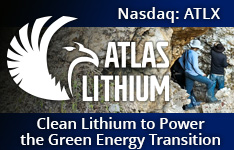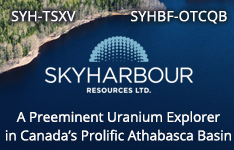BioLargo Inc. (BLGO:OTCQX) announced it has initiated "alpha testing" of a PFAS-detecting portable water test kit designed by Verralize, Inc., a pioneer in advanced water testing solutions. Verralize's innovative "lab-on-a-sensor" kit facilitates quick, on-site identification of per- and polyfluoroalkyl substances (PFAS), commonly known as "forever chemicals" and regulated under the U.S. Safe Drinking Water Act.
The kit is designed to be user-friendly, cost-effective, and capable of distinguishing between different PFAS compounds, providing a crucial resource for water treatment operators to monitor system efficacy and public health.
In addition to determining the commercial potential of the test kits, their application is expected to accelerate the enhancement of BioLargo's own PFAS treatment systems, surpassing the pace achievable with traditional lab-generated data. "Rapid, on-site PFAS detection is transformative for the PFAS treatment market," said Tonya Chandler, President of BioLargo Equipment Solutions & Technologies. "Verralize's kit offers simplicity, affordability, and differentiation of PFAS compounds, making it an invaluable tool for our clients and our internal development team. Using this kit in conjunction with our AEC validates both technologies to the marketplace."
Reducing Need for Lab Samples
BioLargo's Aqueous Electrostatic Concentrator (AEC) technology removes more than 99% of per- and polyfluoroalkyl substances (PFAS), also known as "forever chemicals," from water.
High concentrations of some PFAS may lead to adverse health risks such as cancer, hormonal disruption, and reduced immune system effectiveness, although research is still being conducted. They are called "forever chemicals" because they break down very slowly. Tens of millions of people have been exposed.
BioLargo said the introduction of the Verralize kits reduces the necessity for laboratory sample analysis, thereby enabling water treatment professionals to address contamination issues and make informed treatment decisions more swiftly and economically.
This testing phase is part of a strategic effort to ensure the kit meets the rigorous standards of BioLargo before it is incorporated into their PFAS treatment solutions. The evaluations will take place at BioLargo's laboratory in Oak Ridge, Tennessee, alongside BioLargo's ongoing and upcoming pilot projects, using contaminated water samples supplied by clients.
"BioLargo's team has demonstrated expertise in PFAS science, and we look forward to proving this technology with them," Verralize Chief Executive Officer Dr. Saion Sinha said. "By merging Verralize's portable, rapid-detection capabilities for PFAS with BioLargo's effective remediation technologies, we're crafting a powerful and streamlined solution that enhances accessibility for municipalities and communities in need."
Upon successful validation, BioLargo plans to introduce the kit as an integral part of its PFAS treatment services, offering clients a quicker, more cost-effective way to monitor contamination levels in real-time.
Like other BioLargo PFAS treatment solutions, the Verralize test kits will be distributed through BioLargo's extensive network of manufacturer's sales representatives, the company said. Both BioLargo and Verralize are set to feature BioLargo's PFAS solutions and the Verralize test kits at the Water Environment Federation's 98th annual technical exhibition and conference (WEFTEC 2025) this September.
Study Shows Long-Term Savings
In May, the company announced case study data on the cost savings of AEC that showed a more than 80% long-term savings in lifecycle costs, such as replacing filters or substrates or removing waste, coming from a steep reduction of PFAS-laden waste generated by BioLargo's AEC compared to carbon-based treatment systems.
BioLargo's treatment materials also have lower replacement costs, the company said.
Many current technologies for filtering the chemicals, such as activated carbon and ion exchange resins, have "substantial lifecycle costs," the case study said.
"BioLargo's AEC turns this paradigm on its head, with less ongoing media replacement, less waste, and ultimately total mineralization of that PFAS-laden waste using a separate electrochemical oxidation process," the company said in a release.
BioLargo is made up of subsidiaries that work in different sectors, a "family of companies," including ONM Environmental, BioLargo Engineering, BioLargo Water, BioLargo Energy Technologies, Clyra Medical Technologies, and the new BioLargo Equipment Solutions & Technologies Inc. (BEST) subsidiary.
ONM Environmental includes Pooph, the company's wildly successful consumer pet odor line; Clyra Medical Technologies includes its copper-iodine wound irrigation solution, Bioclynse; and BioLargo Energy has developed a new long-lasting battery that the company said is safer than lithium-ion batteries.
Analyst: Subsidiary Could Intro Wound Product in Next 9 Months
Another of BioLargo's subsidiaries, Clyra Medical Technologies, recently entered into agreements with multiple wholesale distributors and sales agents for its two products that tackle wound and skin infections and promote wound healing, reported Oak Ridge Financial Analyst Richard Ryan in a May 19 research note.
Clyra's products are based on a proprietary copper-iodine technology.
"We believe commercial introduction could occur within the next nine months," Ryan wrote. "Clyra has a chance to be one of the most impactful and profitable operations for BioLargo."
Oak Ridge gave a price target on BioLargo of US$0.35 per share. The company is rated Buy.
The Catalyst: Rivers Near Sewage Sludge Sites Studied
Recent research has identified sewage sludge and wastewater treatment facilities as significant contributors to PFAS water contamination, prompting concerns about the United States' waste management practices, according to a report by Tom Perkins for The Guardian on July 4.
The study examined rivers adjacent to 32 sewage sludge sites, including wastewater treatment plants and fields where sludge is used as fertilizer, revealing alarming PFAS levels near almost all sites. This study is unique in that it sampled water both upstream and downstream from these sites across the nation, finding that downstream levels of at least one PFAS compound were higher 95% of the time, indicating that these sludge sites are likely sources of increased pollution.
"We have an indication of very widespread problems and significant exposures that people are going to be facing," Kelly Hunter Foster, an environmental attorney with the Waterkeeper Alliance, which conducted the research, told Perkins.
Sludge, composed of human and industrial waste, is a byproduct of the wastewater treatment process. Despite its disposal challenges, the Environmental Protection Agency (EPA) permits its application on agricultural land as “biosolid” fertilizer because it is nutrient-rich. However, public health advocates criticize this practice, arguing that it involves spending billions annually to treat water only to reintroduce toxic byproducts into the food supply and re-contaminate water sources.
Wastewater treatment plants often release effluent, or treated water, back into water systems, which frequently contain high levels of PFAS. These levels often surpass the EPA's draft guidance for PFAS in surface waters. The study, which included water samples from 19 states, found the highest concentrations in Detroit’s Rouge River, North Carolina's Haw River, South Carolina's Pocotaligo River, and Maryland's Potomac River. Notably, the Rouge River near Detroit's large wastewater facility showed a 146% increase in PFAS levels.
Similar spikes were observed in the Pocotaligo, Haw, and the Santa Ana River in Southern California. The most significant increase near a field where sewage sludge was applied occurred in Dragoon Creek near Spokane, Washington, where total PFAS levels soared more than 5,100%.
Despite longstanding calls to prohibit the spreading of sewage sludge on agricultural fields, the EPA has been reluctant to impose a ban. However, a 2024 lawsuit alleging violations of the Clean Water Act could potentially lead to regulatory changes. The Trump administration halted the rulemaking process for industrial PFAS discharges initiated by former President Joe Biden’s EPA, which would have compelled treatment plants to reduce their emissions.
Ownership and Share Structure
About 14.6% of BioLargo is owned by insiders and management, according to Yahoo! Finance. They include Chief Science Officer Kenneth Code with 8.24%, CEO Calvert with 3.23%, and Director Jack Strommen with 1.60%, Refinitiv reported.
About 0.04% is held by the institution First American Trust, Refinitiv said.
The rest, about 85%, is retail.
Its market cap is US$60.97 million, with about 304.85 million shares outstanding and about 262.57 million free-floating. It trades in a 52-week range of US$0.32 and US$0.16.
| Want to be the first to know about interesting Technology and Special Situations investment ideas? Sign up to receive the FREE Streetwise Reports' newsletter. | Subscribe |
Important Disclosures:
- BioLargo Inc. is a billboard sponsor of Streetwise Reports and pays SWR a monthly sponsorship fee between US$4,000 and US$5,000.
- As of the date of this article, officers and/or employees of Streetwise Reports LLC (including members of their household) own securities of BioLargo Inc.
- Steve Sobek wrote this article for Streetwise Reports LLC and provides services to Streetwise Reports as an employee.
- This article does not constitute investment advice and is not a solicitation for any investment. Streetwise Reports does not render general or specific investment advice and the information on Streetwise Reports should not be considered a recommendation to buy or sell any security. Each reader is encouraged to consult with his or her personal financial adviser and perform their own comprehensive investment research. By opening this page, each reader accepts and agrees to Streetwise Reports' terms of use and full legal disclaimer. Streetwise Reports does not endorse or recommend the business, products, services or securities of any company.
For additional disclosures, please click here.






































